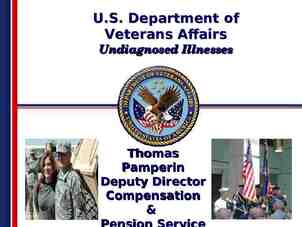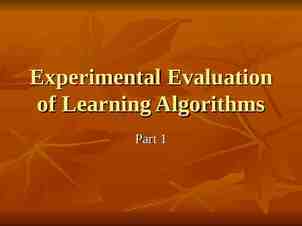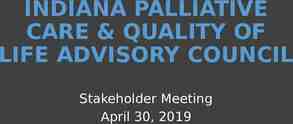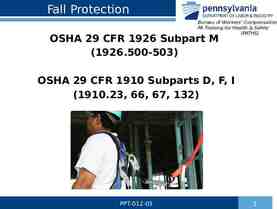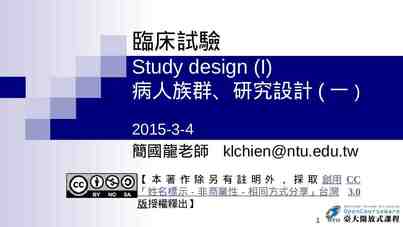Headquarters U.S. Air Force Integrity – Service
49 Slides736.07 KB

Headquarters U.S. Air Force Integrity - Service - Excellence Acquisition Strategy Panel (ASP) Template This template is for guidance and is not mandatory. If tailoring, please ensure to include statutory items at minimum. This document includes AFLCMC/AQ-AZ and Digital Campaign recommended additional guidance for ASP preparation. Last Updated Feb 2021. Rank, Name Office Symbol Date of Briefing Version # Please refer to the notes section for valuable guidance Updated: April 18 1

Outline Bottom Line Up Front (BLUF) Program Structure Program Schedule Factors shaping strategy Capability Needs Affordability Program Cost Est./Funding Program Risks Technology Transition Acquisition Strategy Framing Assumptions Proposed Acquisition Strategy Business Considerations Business Strategy Contract Considerations Competition Strategy/Market Research Contract Parameters Data Rights Small Business System Engineering Digital Engineering/MBSE Cybersecurity Product Support Strategy Test and Evaluation What Worries me Recommendations HQ AF ASPs will be scheduled for 1 ½ hour Program office goal should be to present no more than 30-35 charts Integrity - Service - Excellence 2

“Bottom Line Up Front (BLUF)” (Decisions Requested & Key program information) Decisions you are requesting Approve Acquisition Strategy (see notes) Approve Applicable delegations/waivers (e.g., Source Selection Authority) Major Issues List “show stoppers” What are your concerns? Losing Funding Don’t wait to the end to bring up the negatives! Integrity - Service - Excellence 3

Program X Structure (“Strategy on a page”) Requirements/Direction Decision Authority Using Organization(s) Capabilities Document – ICD, CDD, CPD Joint requirement FMS Technical Risk ADM Financial Data Strategy Est. Contract Value (Pre-EMD) Est. Total Program (qty) - Fund Type (Pre-EMD) – e.g., 3600 New Start (Congressional) – Competitive or sole source Incremental Contract Type – Estimated Contract Award – Schedule MS A – MS B – IOC – Integrity - Service - Excellence 4

Program X Schedule SAMPLE Time Now FY: 2014 2015 2016 Milestones: Concept Decision MS A 2017 2018 MS B 2019 2020 CDR 2021 MS C 2022 2023 2024 2025 2026 IOC (6/6) FRP Development RFP Review Capabilities Documents ICD CPD CDD Tech Demo LEGEND Program Milestone Gov’t Milestone Major Contract Events RFP Rel CA Development EMD PDR CT&E IBR Logistics DSOR DT&E IOT&E Depot Activation ED Guidance LRIP PRODUCTION # of items FRP Identify Critical Path Integrity - Service - Excellence # of Items 5

Schedule to Contract Award MARKET RESEARCH / RFI SYNOPSIS DATES ACQUISITION STRATEGY PANEL J&A/ACQUISITION PLAN or LCMP (or ASR) APPROVAL DRAFT RFP RELEASE FEDBIZOPS [or other system used] SYNOPSIS OF FORMAL RFP PRESOLICITATION CONFERENCE (if Competitive) PEER REVIEW RFP RELEASE PREPROPOSAL CONFERENCE (if Comp) PROPOSALS RECEIVED FACT FINDING/DISCUSSIONS COMPETITIVE RANGE BRIEF (if Competitive) FINAL PROPOSAL REVISIONS/DISCUSSIONS MILESTONES CONGRESSIONAL NOTIFICATION CONTRACT AWARD See Notes Page DEBRIEFINGS (if Competitive and requested) Integrity - Service - Excellence 6

See Notes Page Discuss the capability required (AS Template Para 2) Factors Shaping Strategy Capability Needs Effect of Capability and gap it will mitigate CONOPS, OV-1 Key Performance Parameters (KPPs) and Key System Attribute (KSAs) Discuss Reliability, Maintainability, Availability, and Supportability requirements Acquisition Approach (Evolutionary) as it relates to meeting need Address length of the Increments (see footnotes on length) Discuss what collaboration has been accomplished in developing these capabilities. How has industry been involved? How have they influenced requirements? Identify requirements Industry has indicated they can’t meet either in the capability document or the affordability goal Integrity - Service - Excellence 7

Factors Shaping Strategy Affordability Requirement Discuss your affordability goals (AS Template Para 8.2.1) Do you have enough information to develop an affordability goal? Using both the average unit acquisition cost and average annual operating and support cost per unit what will you be able to present at MS A/B? Discuss strategy for achieving this “KPP” like topic Identify specific contract provisions (e.g., goals and Incentives in RFP) Identify changes to quantities that are necessary to achieve target Identify schedule changes necessary to achieve goal Identify the Digital Acquisition (both business & technical) strategy being used to optimize total system performance & total ownership cost Impact of procurement rate (EOQ) and schedule on the affordability goal What is the source of the Affordability Requirement? Integrity - Service - Excellence 8

See Notes Page Factors Shaping Strategy Program Cost Estimate/Funding Identify your cost estimate and methodology (AS Template Para 8) Identify the Confidence level (55-80%)* Include LCC estimate (product support %) Identify if it is a Program Office Estimate/Service Cost Position Address any AFCAA/OSD CAPE issues that may exist Specifically address funding shortfalls Explain your budget plans RDT&E plan for executing obligation and expenditure Explain what MAJCOM commitment exists to cover shortfall as applicable Provide an overall funding chart (see next chart) Proffer a fully funded Acquisition Strategy Integrity - Service - Excellence 9

MANDATORY SLIDE Integrity - Service - Excellence 10

Program Risks SAMPLE Insufficient funding to execute aircraft buys Date Consequence Likelihood Driver: Two Forward Price Rate Agreement (FPRA) increases (driven by a reduction in the base vs. predictions, erosion in the commercial business, efficiencies in production, a recent strike, and pension liabilities) and potential additional rate impacts due to Pension Protection Act compliance and projected business base loss in FY14 due to fewer aircraft buys are creating budget pressure to execute yearly budgeted a/c quantities and pressurizing APB and Nunn-McCurdy acquisition thresholds. Mitigation Plan: Finalize technical evaluation and negotiation Assess future rate increases and impacts on FYDP(ongoing) Pension Protection Act assessment (AIR 4.2 Lead) Business base (DCMA lead) Continue to Pursue cost reduction/control initiatives Update program manager’s cost estimate Engage Service for funding resolution Support PEO(A)/DCMA rate control initiative with company Date: Oct 10 (FRP decision) Ability to Achieve Affordability Goals to Meet Inventory Objectives Driver: Higher than anticipated costs due to enterprise growth (overhead rates); raw materials; cabin; supplier performance; increased labor hours. Two rate increases (driven by a reduction in the base vs. predictions, erosion in the commercial business, efficiencies in production, a recent strike, and pension liabilities) have recently created additional budget pressure. Mitigation Plan: Establish Affordability plan Implement GFE CRIs (Engines, OTO) Obtain Advanced Procurement in FY10 Execute Long Term Agreements/Long Term Contracts Finalize inspection requirements Assess impacts of PB11 Budget and rate increases with Lot 7 Production Proposal Include spares in production contract Complete Business Case Analysis for MYP If supported by BCA, ensure MYP budget approval/lay-in and implement MYP to begin in FY14 Date: On-going (AS Template Para 6) Failure to Meet Total Ownership Cost Reduction Goals Driver: Delayed I and D level standup, dynamic component DL&T disposition, extended ICS, items not making reliability targets Mitigation Plan: Conduct BCA for long term sustainment/PBL strategy Stand up Organic Intermediate and Depot Level repair Approval of H-1 DL&T’s Execute 5 year Interim Support Plan contract awards CILR drives component redesign efforts/BCAs Date: Ongoing Supply Chain Management to Support Increase to FRP Driver: Poor performance of key suppliers, long lead times (bearings, forgings, castings), LLT purchase orders, staffing, parts shortages, and limited capacity in critical suppliers Mitigation Plan: Obtain Advanced Procurement in FY10 Hire Govt Supply Chain Manager (V-22) Identify dual source for critical suppliers Rationalize supply base Place reps on-site at critical suppliers Hire staffing to meet demand Utilize company gated process for outsourcing Award FY10 Long Lead Support Prime key supplier visits with govt reps Production Readiness Review (support FRP decision) Date: COMPLETE Jul 10 (Risk will be closed) SEE NOTES PAGE and BACKUP SLIDES Integrity - Service - Excellence 11

See Notes Page Technology Readiness (AS Template Para 6.3) SAMPLE Critical Technology Element TRL Incr 1 9 X 6 Incr 2 X 9 X 8 X 9 X 9 X 7. System prototype demonstration in a operational environment 6. System/subsystem model or prototype demonstration in a relevant environment X 5 X 6 X 6 X X 6 X 9 X 8 X 8 X 9. Actual system “flight proven” through successful mission operations 8. Actual system completed and “flight qualified” through test and demo 7 9 Technolog Readiness Levels (TRL) 5. Component and/or breadboard validation in relevant environment 4. Component and/or breadboard validation in laboratory environment 3. Analytical and experimental critical function and/or characteristic proofof-concept 2. Technology concept and/or application formulated 1. Basic principles observed and reported Integrity - Service - Excellence 12

Acquisition Strategy Framing Assumptions #1 SAMPLE Purpose-built will be competitive with existing designs Framing Assumption Implications Expectations Basic aircraft and training system designs will be complete through vendor-conducted CDRs Enter at MS B Limited EMD of “deltas” to meet spec PDR and competitive prototype waivers applicable Best-value source selection must consider risk Contractor flight data to validate performance Single step to full capability Single award for EMD, Prod and ICS See Notes Page for more examples of framing assumptions Integrity - Service - Excellence RAA in 2023 FOC in 2031 13

Acquisition Strategy Framing Assumptions #2 SAMPLE APT requirements only Framing Assumption Implications Expectations Mature technologies and systems available Single step, limited EMD, waivers etc. AETC sole customer Separate PPBE process for other T-38 owners Separate Planning Programming Budgeting and Execution (PPBE) process for APT derivative use capabilities Integrity - Service - Excellence IOC 2023 14

See Notes Page Acquisition Strategy Framing Assumptions ALTERNATE SAMPLE Assumption* Implications** Expectations*** Design is Mature Production Schedule to IOC will be concurrency possible achieved Threat levels Capability changes will not change unlikely much in the next 5 years Costs to stay on track Commercial demand will reduce unit cost Production cost Est is realistic No additional funding needed nor cost growth Schedule Incentive will motivate Ktr Schedule will be achieved Warfighter IOC date will be met Integrity - Service - Excellence Metric**** Schedule growth below historical median 15

Proposed Acquisition Strategy The Acquisition Strategy defines the approach the program will use to achieve full capability: either evolutionary or single step; it should include a brief rationale to justify the choice. (AS Template Para 3) If evolutionary acquisition approach, summarize the cost, schedule, and performance drivers for the increment under consideration, and the plan to transition from the initial increment to later increments. Specify any unique program circumstances Are you replacing an existing system (modification or new capability) New Start Is this a joint program? Identify Service(s)/DoD Components; Service-specific technical and operational differences; roles and responsibilities; and program funding If MS B or C total planned production and LRIP quantities. If LRIP quantity exceeds 10% provide justification. Address and regulatory tailoring necessary for program efficiency SEE BACK UP for sample charts on alternatives considered and rationale I n t e g r i t y for - the S estrategy r v i c selected e - Excellence 16

See Notes Page Business Strategy Discuss the program’s business strategy for the contractor/government ownership of the architecture, labs and knowledge-based tools E.g. Own the Technical Baseline (OTB), and/or Modeling Strategy objectives: Government Organic & Controlled / Model Centric Hybrid Government & Contractor Collaborative / Model Collaborative Government Influenced & Contractor Supported / Model Supported Discuss the contractor/government collaboration approach over the program lifecycle for knowledge sharing concepts including Digital Ecosystem / Integrated Digital Environment (IDE) Product Lifecycle Management (PLM) Authoritative Source of Truth (ASOT) Discuss the Digital Engineering & Management and Open Systems business strategies being utilized by the program Discuss the software development approach (Agile, DevSecOps, DevStarOps, etc) and how it supports the acquisition strategy Integrity - Service - Excellence 17

Competition Strategy/Market Research Competition Strategy (AS Template Para 7.1) Explain how a competitive environment will be sought, promoted, and sustained throughout all program phases. Summarize the competition strategy for the upcoming phase Where head-to-head competition is not possible, explain how dissimilar competition or other competitive approaches will be used Include Digital Acquisition in Competition Strategy (Digital fly-offs, Simulations, etc.) Market Research (AS Template Para 7.2) Summarize research conducted and results. Indicate the specific impact of those results on the various elements of the program. Plans for continuing market research to support the program throughout development and production. Plans for getting industry insights on potential requirements and cost trade space to support AF’s cost capability analysis Sole Source Authority(AS Template Para 7.5.1.5) Identify legal authority and basis Planned Action to obtain future competition (e.g., buying tech data package & associated intellectual property rights Integrity - Service - Excellence 18

Competition Strategy/Market Research Source Selection Approach List the known sources (AS Template Para 7.5.5) Source Selection Procedures/Organization Address the Source Selection experience of the team (see notes) Best Value approach (e.g., Trade-off/Lowest Price Technically Acceptable) (AS Template Para 7.5.4) Only use LPTA when able to clearly define Technical Acceptability Evaluation Criteria with Weighting Tied to Risks and Significant Discriminators Evaluation Criteria—Section L&M criteria Factor/subfactor weightings Identify the criteria that will be used to select the winning bidder. Indicate how those criteria reflect the key government goals for the program. How will data and data rights acquisition be evaluated Be prepared to Discuss in detail Will the program’s Digital Acquisition objectives over the life cycle be leveraged in source selection? Discuss the robustness of the Gov’t Digital Reference Library & bidders library based on program’s Digital Strategy guidance I n t e g rSee i t ynotes - Ssection e r v ifor c OSD e - E xcellence 19

Contract Parameters Contract Type (AS Template Para 7.5) Need to discuss the rationale for your contract type What measures are in place to control contract costs? Describe type & number of contracts expected & why you chose that approach—will this reduce program risk? Have you considered breakout of subsystems? Contract Structure (Length, Options, CLINs) Special Terms and Conditions E.g., Organizational Conflict of Interest (OCI), Pricing Matrix, Warranty of Data (DFARS 252.246-7001), warranties, Advance procurement If an Undefinitized Contract Action (UCA) is planned discuss rationale and what led to this situation as well as get well plan Subcontractor Management Make or Buy considerations Discuss usage of model-based contract language based on programs Digital Strategy/Modeling Objectives Integrity - Service - Excellence 20

Contract Parameters & Incentives Discuss planned Incentives (AS Template Para 7.5.2) What are the key program risks and how can incentives help to mitigate risks and improve probability of success? What Objective Incentives were considered and why? Award Fee How is award fees linked to the acquisition outcomes—cost, schedule and performance? How is award fee tied to specific challenges, commitments & delivered capability versus just “effort” Are there negative incentives for overrun or poor performance? If more than one incentive is planned explain how the incentives complement each other and do not conflict. Why will the incentive motivate the contractor? What incentives do the contractors intrinsically have and/or what incentives is the government providing to meet program office Digital Acquisition objectives? Integrity - Service - Excellence 21

See Notes Page Intellectual Property (IP) Strategy What do you need? (AS Template Para 7.6) What technical data rights & deliverables will be needed throughout the system’s life cycle? What is needed to support the sustainment plan (OEM maintained or organically sustained)? How is a Modular Open Systems Architecture (MOSA) business strategy being used in harmony with the IP Strategy to ensure competition at both prime & subcontract level throughout life-cycle (including system/subsystem upgrades & maintenance (CLS/ Depot)? How does your Government Reference Architecture (GRA) and open standards impact IP needs? Who is paying for development (govt or contractor) and what rights have been previously procured? How will you buy it? Discuss strategy for technical data/software data rights procurement, data access & data delivery. For a competitive procurement, describe evaluation factors that will be used to assess the price and adequacy of the technical data during source selection. Discuss use of options for delivery of technical data and obtaining additional rights in the technical data. Assess merits of including a priced contract option for future (or deferred) delivery of technical data and intellectual property rights. (See DOD 5010.12-M Chapter 5 for pricing data.) Discuss strategy for acquiring software (source code, documentation, and development artifacts) How will you manage it? What approach will be used to ensure delivery and adequacy of data? How will program office verify contractor’s assertion of restricted use & release of data? What considerations are being made for digital product design data requirements? What is the Product Lifecycle Management (PLM) strategy/process to ensure Data Rights are managed & protected when required? Integrity - Service - Excellence 22

Small Business What does your Industrial Base Survey indicate is the small business (SB) Capability? (AS Template Para 7.5.7) Identify NAICS ( ’s or employee size standard) and Product Service Code (PSC) used based on market intelligence Is this acquisition appropriate for a SB set -aside? If so, what are your recommendations? Breakout opportunities? Are there any bundling or consolidation decisions? If no prime opportunities, describe your plan for SB participation Identify planned contract incentives to encourage aggressive SB subcontracting Identify percentage requirements for SB subcontracting How will small business be evaluated in source selection? Discuss your plan for post award monitoring Integrity - Service - Excellence 23

Systems Engineering (SE) Outline the open systems architecture approach, combined with the Product Support and IP strategy, which the government will pursue in order to ensure a lifetime consideration of competition (AS Template various) Systems Engineering Tradeoff analysis Address the program’s Government Reference Architecture (GRA) with open key interfaces & open/common standards identified for your domain of operation for systems & subsystems (including software & hardware) Show your approach to determining how cost varies as the major design parameters and time to complete are traded off against each other Discuss key requirements impacting Acquisition Strategy Discuss requirements maturity and stability Discuss how the SysML-compliant Government Reference Architecture (GRA) is being used & leveraged for requirements traceability and maturity Address how GRA model (or leverage/modify existing GRA models) supports implementing the program Digital Eng/Mgmt & Open Architecture objectives Discuss how Reliability, Maintainability and Availability are addressed in the SRD (AS Template Para 7.5.10) Integrity - Service - Excellence 24

Systems Engineering (Continued) Discuss status of initial manufacturing concepts and their implementation (pre-MS B/C)? What is the status of LRIP manufacturing capabilities and ability to ramp up to full rate production? Status of Production Readiness Review What are the critical manufacturing elements? Plans for addressing manufacturability and maturity Describe key SE components of the RFP and contract Identify SE RFP requirements and selection criteria (or address in source selection part of brief) Identify SE contractual provisions to ensure contractor implements proposed approach Address Digital Acquisition/Engineering requirements that will be implemented Address Digital model artifacts/analysis and any Digital Thread / Digital Twin requirements traceability for manufacturing Is a configuration management plan required and, if so has one been developed? Have defense exportability features been considered in the initial designs (AS Template Para 10.3) Integrity - Service - Excellence 25

Digital Engineering/MBSE Strategy Define how the DE/MBSE strategy was derived-from and maps-to the business strategy Define the expected benefits of DE/MBSE and its injection points in the acquisition schedule Define the acquisition Modeling objectives Model-based Capabilities Assessment results to ensure the government team is ready for modeling and contractor modeling results Model element and data needs that are necessary to meet the modeling objectives and result in RFP/model contract data requirements Modeling plan as part of the SEP, TEMP, LCMP, etc Define the software strategy Address your Agile Software DevSecOps and/or Dev*Ops strategy. Tailor your program objectives/requirements for “baked” in security (DevSecOps) methods to enforce cybersecurity, and where applicable additional “baked” in factors like safety and certification requirements (Dev*Ops where the “*” represents the additional factors) Integrity - Service - Excellence 26

Cybersecurity & Resiliency Acquisition Strategy Panel Chart CyberSecurity and Resiliency Program Protection Cybersecurity (to include Trusted Systems and Networks (TSN)) Authority and Date concurrence SRD/ Spec Statement of Objectives (SOO) / Statement of Work (SOW) / Performance Work Statement (PWS) Request for FAR / DFARS Sufficiency Proposal / AFFARS Assessment (RFP) Section Clauses L / Section M Ex: Section 2.3 Ex: G Critical Program Information / Anti-Tamper (AT) Security Management Cyber Resiliency Integrity - Service - Excellence 27

MANDATORY SLIDE Product Support See Notes Page Metrics Data Product Support Strategy Sustainment Approach Antecedent Actual Original Goal Current Goal Current Estimate/ Actual Materiel Availability 76% 80% 77% 71% Materiel Reliability 37 hrs 50 hrs 50.5 hrs 48 hrs Ownership Cost 245.6B 385.5B 395.1B 395.1B Mean Down Time 12 hrs 20 hrs 18 hrs 15 hrs Metric Current (initial CLS covering total system) Future (sub-system based PBL contracts) Issues Shortfall in O&M funding in FYDP Reliability and availability estimates are below goals LCSP requires update before DAB Resolution POM request for O&M restoration submitted Reliability improvement plan with clear RAM goals up for final signature LCSP in draft (AS Template Para 7.4) * Test or fielding event data derived from Notes: Today MS B MS C IOC FRP BCA O&S Data Sustainment Schedule FOC BCA Sustainment BCA BCA PBL Recompete LCSP LRIP Contract Award Avionics PBL CLS Start PBL Recompete Antecedent Cost ABC Original Baseline ABC Current Cost 1.0 Unit-Level Manpower 3.952 5.144 5.750 2.0 Unit Operations 6.052 6.851 6.852 3.0 Maintenance 0.739 0.605 0.688 4.0 Sustaining Support 2.298 2.401 2.401 5.0 Continuing System Improvements 0.129 0.025 0.035 6.0 Indirect Support 1.846 1.925 1.956 15.046 16.951 17.682 Cost Element Total Cost based on average annual cost per squadron Depot Standup Blended Partnership Startup Total O&S Costs Antecedent ABC Base Year M 102,995.2 184,011.9 245,665.3 395,147.2 ThencYear Integrity - Service - Ex e M llence 28

Product Support Strategy Digital Engineering Summarize the product support strategy for meeting sustainment requirements necessary to satisfy the model-based acquisition strategy requirements (Technical Data Strategy/Intellectual Property Strategy) Define the program's approach to managing the data during both acquisition and sustainment (e.g., access, method of delivery, format, and storage) within a modelbased environment Address the approach to managing the data & IP during acquisition & sustainment (e.g., access, method of delivery, format, and storage) and how it complies with the AF Data Strategy for Visible, Authoritative, Understandable, Linked & Trusted (VAULT) Data. Address implementation of Product Lifecycle Mgmt (PLM) and other Logistic Capability initiatives for Technical & Logistics baseline data to plan, buy, and fix the right stuff. Include leveraging the Integrated Logistic Data Model/Logistic Reference Architecture to connect Integrated Product Support (IPS) elements to the GRA to ensure design driven sustainment planning, include coverage of IPS elements for the program’s Authoritative Source of Truth (ASOT) to establish/maintain the Digital Thread and validated Digital Twin(s) to support sustainment for the programs life cycle. Operations & Sustainment Data Consideration for network compatibility issues and mitigation steps for operating in the modelbased environment Document logistics data enterprise architecture generated which identifies electronic data repositories, information exchange requirements, and/or usage Identification of preliminary engineering/products support data needed Considerations for process by which Tech Orders (TOs) will transfer from Acquisition to Sustainment Integrity - Service - Excellence 29

See notes as limited room on this slide. Overflow goes to backup unless MDA decision is needed on test strategy. Test and Evaluation (T&E) Summarize the T&E Strategy; how does it support the acquisition strategy, and provide info for major decision points Identify LDTO, OTO, major test facilities to be used. Is ITT formed/active? Is the program on OSD Test oversight? (DOT&E and/or DD,DT&E) Is test strategy fully developed & synced w/ contract? Identify any risks or issues regarding availability of test articles, test facilities or support assets, test personnel, etc. Describe any capability shortfalls of the test ranges to support. Does program plan have adequate schedule, budget, & resources for T&E? Describe how T&E strategy supports “Digital Acquisition” How are models/MBSE used for test planning, predicting test results, and complementing physical testing? Any Gov’t-provided reference models? What digital access do testers require to contractor models & data? How will a program Integrated Digital Environment be used by test team? How is test data shared between stakeholders? Integrity - Service - Excellence 30

“What Worries Me” This is an opportunity to communicate internal concerns to the SAE Discuss any issues that are of a particular concern to the PEO and PM (examples might be) OSD Oversight issues Funding instability Technical transition issues Congressional Interest Requirements stability Integrity - Service - Excellence 31

Recommendation Approve Acquisition Strategy Concept Allow program to draft Acquisition Strategy Approve applicable delegations Approve waivers and deviations Way ahead to AFRB and OSD DAB Staff reviews/OIPT (PEO reviews) Integrity - Service - Excellence 32

Back-Up See Footnotes for additional information Integrity - Service - Excellence 33

Back-ups Program Office Industrial Base Capability and International Cooperation Software Development Risk Additional Acquisition Topics Samples Affordability Should Cost Source Selection Acquisition Strategy Lessons Learned/FAR Part 2 Integrity - Service - Excellence 34

Program Office Organization, Experience and Manpower Provide Organizational Structure (Org Chart) (AS Template Para 9.1) Resources Address Critical manpower positions / program office manning & facilities Program Office Staffing & Support Contractor Resources Available to PM Identify Deputy PM, chief program engineer, lead program system engineer, lead cost analyst, product support manager and engineering data management officer (EDMO), contracting officer, financial manager, T&E Identify any shortage of personnel Identify current DAWIA (APDP) certification levels for all key government personnel (SPMs, PMs, etc) Address the technical level of the team and the alignment w/ the program’s Own the Tech Baseline & Model Strategy/Objectives (Govt Controlled, Gov/Ktr Hybrid, Ktr controlled)? Define your Digital Acquisition resources and IT needs Integrated Product Teams (IPTs) PMA tenure agreement Integrity - Service - Excellence 35

SAMPLE Program Org Chart OSD/AT&L SAF/AQ User ACC/A5XX PEO Col B Martin Lt Gen JP Jones Depot OO-ALC/XYZ Col Al Griggs PM Col John Smith Program Control Maj D. MacArthur PC IPT 2 Captains 1 GS-12 5 Contractors Contracts Ms. Jane Smith Sys Eng Maj Kelly Johnson Contracts IPT 2 Captains 1 GS-12 Sys Eng IPT 2 Captains 1 GS-12 5 Contractors PSM Lt. Col T. Jones Test Maj C. Yeager Support IPT Test IPT 1 Captain 1 GS-12 4 Contractors 2 Captains 1 GS-12 5 Contractors Does the technical level of the team align with the program’s Own the Tech Baseline & Model I n t eStrategy g r i t y -(Govt S e rControlled, v i c e - E xGov/Ktr c e l l eHybrid, n c e Ktr controlled)? 36

Industrial Base Capability and International Cooperation Industrial Capability Address industry’s capability to design, develop, produce, support (product technology obsolescence, replacement of limited-life items, regeneration options for unique manufacturing processes, and conversion to performance specifications at the subsystems, component, and spares levels) , and, if appropriate, restart a program. Address the need for government action necessary to ensure a robust US Industrial and Technical base Are new industrial base capabilities required? US or off-shore manufacturing? Diminishing Manufacturing Sources (DMS) Do you have sufficient data and data rights for DMS? International Cooperation/Foreign Military Sales Defense Exportability considered in the design of the system? these I nSee t e gNotes r i t ysection - S e r to v iaddress ce - Ex c e l topics lence 37

Software Development Address the DevSecOps (or DevStarOps) maturity growth over lifecycle Address the program implementation of the DevSecOps Design Pillars Show DevSecOps pipeline and discuss how key elements of software development are being met Modern SW dev practices, human centered design, active & committed user engagement, enterprise services/platforms, rapid & interative releases, gov’t/industry software teams, automated tools DoD Enterprise DevSecOps Reference Design Integrity - Service - Excellence 38

Additional Acquisition Topics (if not addressed elsewhere) Program Protection Planning Anti-Tamper Protection of Critical Program Information Information Assurance Trusted Foundry Clinger Cohen Act Certification progress (CCA) Environmental & Manufacturing/Quality Engineering Interdependencies/Interoperability Information Technology Human Systems Integration Environment, Safety, Occupational Health Spectrum Management/Supportability Integrated Digital Environment Management (may address in the data rights section) Government Furnished Equipment/Property Modeling and Simulation Corrosion Control Intelligence Mission Data (IMD) General Equipment Valuation (MS C) Multi-year procurement Integrity - Service - Excellence 39

Risk Mitigation SAMPLE Risk ID & Title / Category Risk Statement: E.g., Cost proposal exceeds budget Impact: Address impact of risk Likelihood: 4 Consequence: 4 Risk Rating: High (Red) Risk Management: Address mitigation approach (Describe risk handling plan, milestones and risk closure criteria. Specifically address cost, schedule and performance impacts and cost/schedule reserve (margin). Indicate what resources are required to cover the risk. What is the the performance impact?) Post Risk Management Rating: Likelihood 1, Consequence 2 (GREEN) All High and Moderate Risks should be identified. Recommend Program Office prepare a Risk Mitigation chart and provide in back-up Integrity - Service - Excellence 40

See Notes Page Should Cost Summary Realized FY13: 1.400M; EMD Phase 1 Aircraft Integration Ensure all1Should Cost Initiatives are PEO FY13: 11.000M; EMD Phase Test Activities Approved in CCaRS and values are consistent. Planned Use Back-up slides to elaborate on each FY16-FY18: 70.292M; EMD Phase 2 (Contract Award) Source Selection Savings initiative. FY 17: 24.500M; Flight Body-2 FY18: 26.000M; EMD Phase 2 Test Activities Integrity - Service - Excellence 41

Source Selection Evaluation Criteria Selection SAMPLE Top Risks Mitigation ACTS Availability AEHF Launch Ops Terminal Control Functions System Performance Architecture Fielding study System Engineering Integrated Process Management Section L System Data Management DMSMS Robust Systems Engineering OPS Architecture Section M Software Development SCA Compliance Operator Terminal Control Specialty Engineering Integrity - Service - Excellence Program Monitoring Software Engineering 42

Source Selection SAMPLE Identify criteria weighting Integrity - Service - Excellence 43

Basis for Selecting Proposed Strategy SAMPLE The Challenge—Program Needs Strategy 1) Meets need date 2) Migrates to architecture 3) Satisfies the Net Ready KPP 4) Utilizes existing equipment 5) Maximizes insulation from other program risks 6) Manages internal program constraints/dependencies 7) Other upgrades, computer processors, resources (labs & people) Best fits in a fiscally constrained environment Seven Key Items Used to Develop Strategy Integrity - Service - Excellence 44

Solution Trade Space SAMPLE Strategy 1 Strategy 2 Strategy 3 Strategy 4 Strategy 5 Need Date G Y G R R Migrates R Y G Y G Satisfies Net Ready R R R Y G Utilizes Equipment R R G R G G G Y G R G R G R Y G R G R R Insulation from others Manage Constraint s Fits Fiscal Constraint s RED No YELLOW Partially GREEN Yes Integrity - Service - Excellence 45

Some Items to Consider in Preparing Briefing – Feedback from Other Reviews Incentives Schedule Briefer unable to explain schedule flow and margins for potential slips SORAP did not align with program schedule ensure AFMC involved early for sustainment funding Risk Did not Focus on highest risk areas Could not explain rationale for share ratios and ceiling Inadequate to control cost Failure to adequately identify risk, or address mitigation plan once identified PMs overly optimistic Risk Mitigation inadequately addressed just indicating the SPO would work harder “Working harder” is not a risk mitigation strategy Source selection criteria did not relate to program technical risks Source selection factor weightings were out of sync with program priorities Funding Did not align with requirements or schedule Need to present a fully funded program Need to clearly identify costs by increment & map to budget documents Small slip in contract award from end of FY A to beginning of FYB can mean loss of FYA funding Be mindful that management reserve not used in the year of execution likely taken Integrity - Service - Excellence 46

For Information Purposes Only FAR Part 2 What constitutes Source Selection information “Source selection information” means any of the following information that is prepared for use by an agency for the purpose of evaluating a bid or proposal to enter into an agency procurement contract, if that information has not been previously made available to the public or disclosed publicly: (1) Bid prices submitted in response to an agency invitation for bids, or lists of those bid prices before bid opening. (2) Proposed costs or prices submitted in response to an agency solicitation, or lists of those proposed costs or prices. (3) Source selection plans. (4) Technical evaluation plans. (5) Technical evaluations or proposals. (6) Cost or price evaluations of proposals. (7) Competitive range determinations that identify proposals that have a reasonable chance of being selected for award of a contract. (8) Rankings of bids, proposals, or competitors. (9) Reports and evaluations of source selection panels, boards, or advisory councils. (10) Other information marked as “Source Selection Information – See FAR 2.101 and 3.104” based on a case-by-case determination by the head of the agency or the contracting officer, that its disclosure would jeopardize the integrity or successful completion of the Federal agency procurement to which the information relates. Integrity - Service - Excellence 47

See Notes Page Cost Driver / Operational Requirements Trade space Requirement Cost Driver (i.e. KPP, KSA, other attributes) KPP 1 : Radar System Performance Proposed Relaxed Requirements Increase search update interval by 5 seconds Operational Risk/Impact Reduces TBM growth capability KPP 2: Sustainment Material Availability Relax from 64% to 50% Possibly unable to meet optimum 36 mo. maintenance cycles so as to maintain Mission Readiness KPP 3: Mission Execution (Comm) Partially enable wireless communication Unable to provide full C3 capability – reduce responsiveness Reduced System Capability Change in Cost (e.g. LCCE, APUC, RDT&E, Production, O&S, etc.) Req’d power aperture decreased by 15% 50M reduction in RDT&E Req 2 new aircraft instead of 3 9B reduction in LCCE Integrate with only basic wireless capability 10M reduction in RDT&E Integrity - Service - Excellence 48

Useful Links to Digital References Link to AF Digital Guide: https://usaf.dps.mil/teams/afmcde Integrity - Service - Excellence 49

